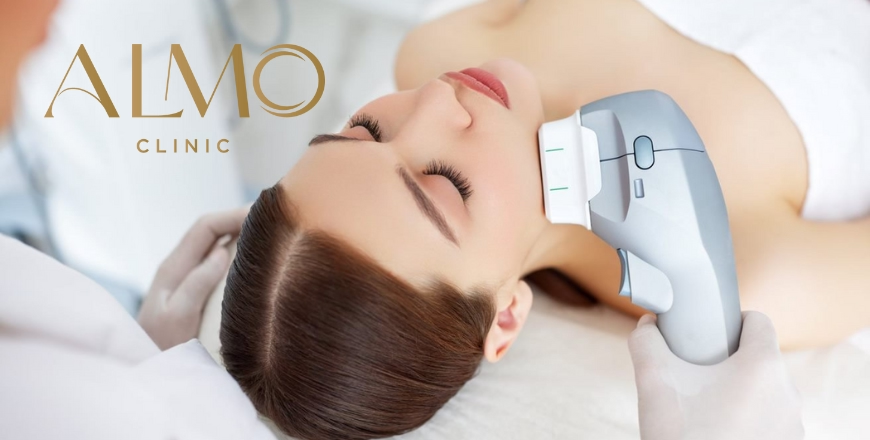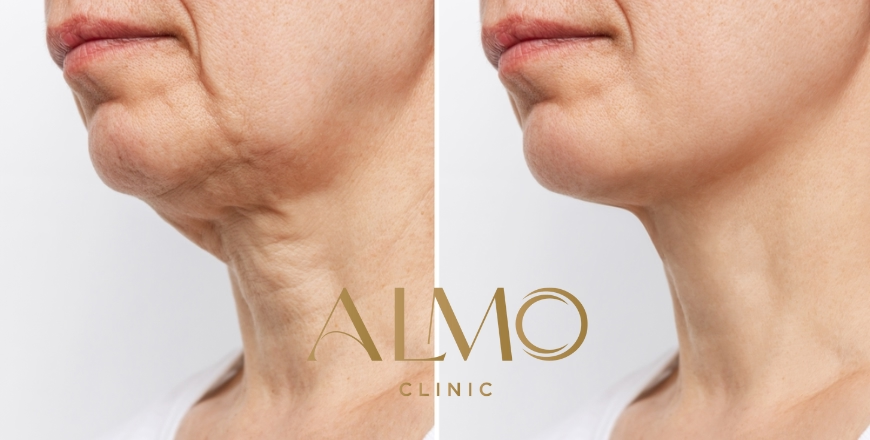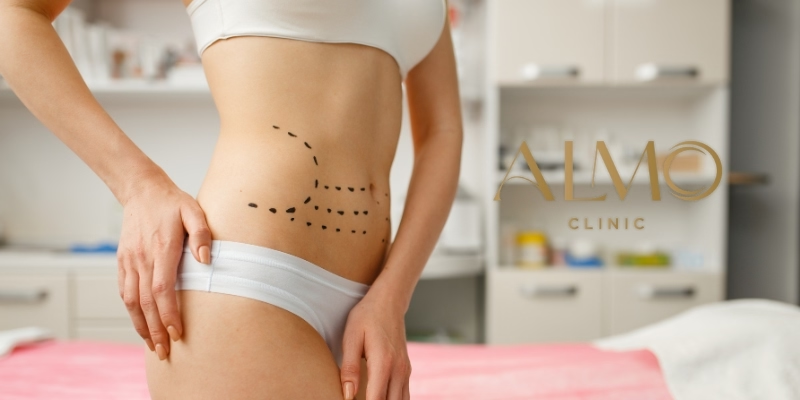“Does a HIFU treatment that doesn’t hurt really exist?”
Until a few years ago, this question was impossible to answer honestly. HIFU meant excellent results, but also significant pain that limited treatment adoption.
Liftera changed that equation forever.
As a specialist who has performed over 1,200 HIFU procedures in the last 15 years, I can categorically state: the difference between traditional HIFU and Liftera is revolutionary.
Let me explain why this technology is transforming aesthetic medicine in Colombia and the world.
The historical problem that Liftera solved
The traditional HIFU paradox
HIFU (High-Intensity Focused Ultrasound) has proven extraordinarily effective for non-surgical facial lifting since 2009. The results rivaled invasive procedures, lasted 12-18 months, and safety was exceptional.

But there was a critical problem: pain.
70% of patients described the procedure as “significantly uncomfortable” or “painful.” Many excellent candidates simply rejected the treatment due to friends’ reports about discomfort.
It was like having a Ferrari you could only drive in first gear.
Why did traditional HIFU hurt so much?
The physics of the problem were clear. Conventional HIFU concentrates ultrasonic energy on microscopic points of 1-2mm, creating temperatures of 65-70°C in tiny spaces.
Imagine touching your skin with the tip of a soldering iron for microseconds, repeated hundreds of times. Effective for generating neocollagenesis, but inevitably uncomfortable.
The extreme heat spikes activated pain receptors, no matter how much topical anesthesia we applied.
The TDT revolution: same destination, different journey
How Thermal Diffusion Treatment works
Asterasys, the Korean company behind Liftera, developed a radically different approach: What if we distribute the same total energy over broader areas?
Instead of extreme heat points, TDT creates zones of uniform heating that cover larger surfaces with controlled temperature.
The final temperature remains 65-70°C necessary for neocollagenesis. But the thermal distribution eliminates painful spikes.
The analogy that explains everything
Traditional HIFU: Like using a magnifying glass to concentrate sunlight on a point of your skin. Extremely hot, inevitably uncomfortable.
Liftera TDT: Like approaching an infrared radiator. The temperature is the same, but distributed evenly.
Both raise tissue temperature to therapeutic levels. Only one is comfortable.
My clinical experience: before and after Liftera
Pre-Liftera era (2010-2019)
In my early years with traditional HIFU, I developed specific protocols to manage pain:
- Pre-treatment analgesic medication 60 minutes before
- Multiple topical anesthesia applications
- Frequent pauses during procedure
- Breathing and relaxation techniques
Still, 40% of patients needed interruptions due to discomfort. 25% didn’t return for maintenance due to negative memory of the experience.
Results were excellent, but the psychological barrier was real.
Liftera era (2020-present)
When we introduced Liftera at ALMO Clinic, the transformation was immediate:
- 95% of patients complete treatment without pauses
- Normal conversations during procedure
- 85% of patients return for maintenance vs previous 75%
- Referrals increased 40% due to positive experiences
The same doctor performing the same procedure with equivalent results, but radically different experience.
The numbers that prove the difference
500-patient satisfaction survey
Pain scale 1-10 during treatment:
- Traditional HIFU (Ultherapy): Average 6.8/10
- Liftera TDT: Average 2.3/10

Overall experience rating:
- Traditional HIFU: 7.2/10 (“effective but uncomfortable”)
- Liftera: 9.1/10 (“effective and comfortable”)
Likelihood to recommend:
- Traditional HIFU: 78% would recommend
- Liftera: 96% would recommend
Objective adherence data
Return for maintenance:
- Traditional HIFU: 65% return in 18 months
- Liftera: 85% return in 15 months
Referrals generated per patient:
- Traditional HIFU: 1.2 average referrals
- Liftera: 2.8 average referrals
Comfort not only improves the experience. It improves adherence and long-term results.
Why don’t all centers offer Liftera?
Economic factors
Liftera equipment requires significant initial investment. Many centers continue with generic HIFU or older systems due to economic considerations.
Learning curve
TDT requires recalibration of parameters and technique. Doctors experienced in traditional HIFU must adapt their approach.
Resistance to change
Aesthetic medicine can sometimes be conservative about adopting new technologies. “If it works, why change?”
Limited availability
Asterasys has selective distribution. Not all centers can access authentic equipment.
At ALMO Clinic we prioritize patient experience over economic considerations. That’s why we were among the first in Colombia to adopt Liftera.
Cases that illustrate the difference
Case 1: María José, second chance
María José, 38 years old, had tried traditional HIFU at another center. She stopped the procedure halfway due to excessive discomfort.
She came to ALMO Clinic convinced that HIFU “wasn’t for her.”
With Liftera, she completed face and neck without discomfort. Her comment: “It’s the same result I expected, but without the torture. Why didn’t they tell me this option existed?”
Case 2: Andrea, regular maintenance
Andrea, 44 years old, had done Ultherapy every 2 years. Excellent results, but postponed sessions due to pain memory.
With Liftera she establishes maintenance every 15 months. Better cumulative results due to superior adherence.
Case 3: Carmen, first time at 50
Carmen had avoided any aesthetic procedure due to pain apprehension. At 50 she decided to “do something” but only if completely tolerable.
Liftera allowed her to access rejuvenation she had avoided for years. “If I had known it was so comfortable, I would have started earlier.”
The future of HIFU is pain-free
Global trend
Leading manufacturers are adopting thermal distribution technologies. Liftera was a pioneer, others are following.
Patient expectations
Once you experience pain-free HIFU, it’s impossible to return to uncomfortable alternatives. It’s like flying business class and then returning to economy.
Treatment democratization
Lower psychological barrier means more women accessing non-surgical facial rejuvenation. HIFU stops being “only for the brave.”
Important considerations before deciding
Not all “Liftera” is authentic
Liftera’s success has generated imitations. Verify that the center has official Asterasys certification and authentic equipment.
The doctor’s technique remains crucial
Superior technology in inexperienced hands doesn’t guarantee results. Look for specialists with documented HIFU experience.

Realistic expectations
Liftera eliminates pain, not the laws of physics. Results still require time (6 months) and maintenance (12-18 months).
Individual evaluation
Each case requires personalized evaluation. What works for a friend may not be optimal for you.
How to know if you’re a candidate for Liftera
Ideal profile
Age: 30-55 years with mild to moderate sagging Expectations: Gradual and natural improvement, not dramatic transformation
Lifestyle: Active, cannot afford recovery time Previous experience: Especially if you avoided HIFU due to pain reports
Cases where I evaluate other options
Severe sagging: May require surgery or combined procedures Unrealistic expectations: Those expecting major surgery results Limited budget: More economical alternatives exist though less effective
The advantage of being pioneers in Colombia
At ALMO Clinic we adopted Liftera since its introduction in Colombia. This early experience gives us unique advantages:
- Optimized protocols developed over 4+ years
- Technical expertise in personalized parameters by skin type
- Long-term follow-up of results and evolution
- Documented cases demonstrating sustained effectiveness
We’re not just a center that “offers Liftera.” We are TDT technology specialists with verifiable experience.
Your next smart step
If you’ve considered HIFU but were stopped by concern about discomfort, Liftera eliminated that barrier.
If you tried traditional HIFU and it was uncomfortable, Liftera gives you a second chance with a completely different experience.
If you’re looking for facial lifting without surgery but prioritize comfort, Liftera is currently the best available option.
Aesthetic medicine has advanced. Pain is no longer a requirement for excellent results.
Ready to experience HIFU as it should be: effective AND comfortable? A specialized evaluation determines if Liftera is the ideal option for your specific goals.
Schedule your Liftera evaluation →

![CO2 Laser vs Morpheus8: Which One Better Eliminates Acne Scars? [2025]](/img/blog/laser-co2-vs-morpheus8-cicatrices.avif)


![Liftera vs Ultraformer: Which to Choose in Bogotá? [2025 Comparison]](/img/blog/liftera-vs-ultraformer-bogota.avif)

